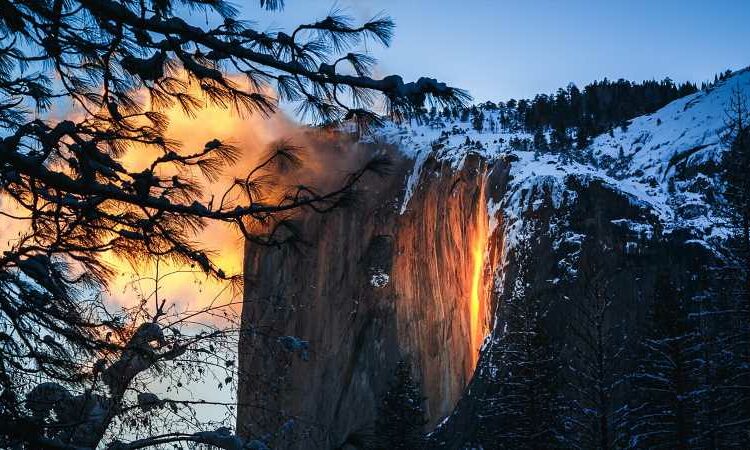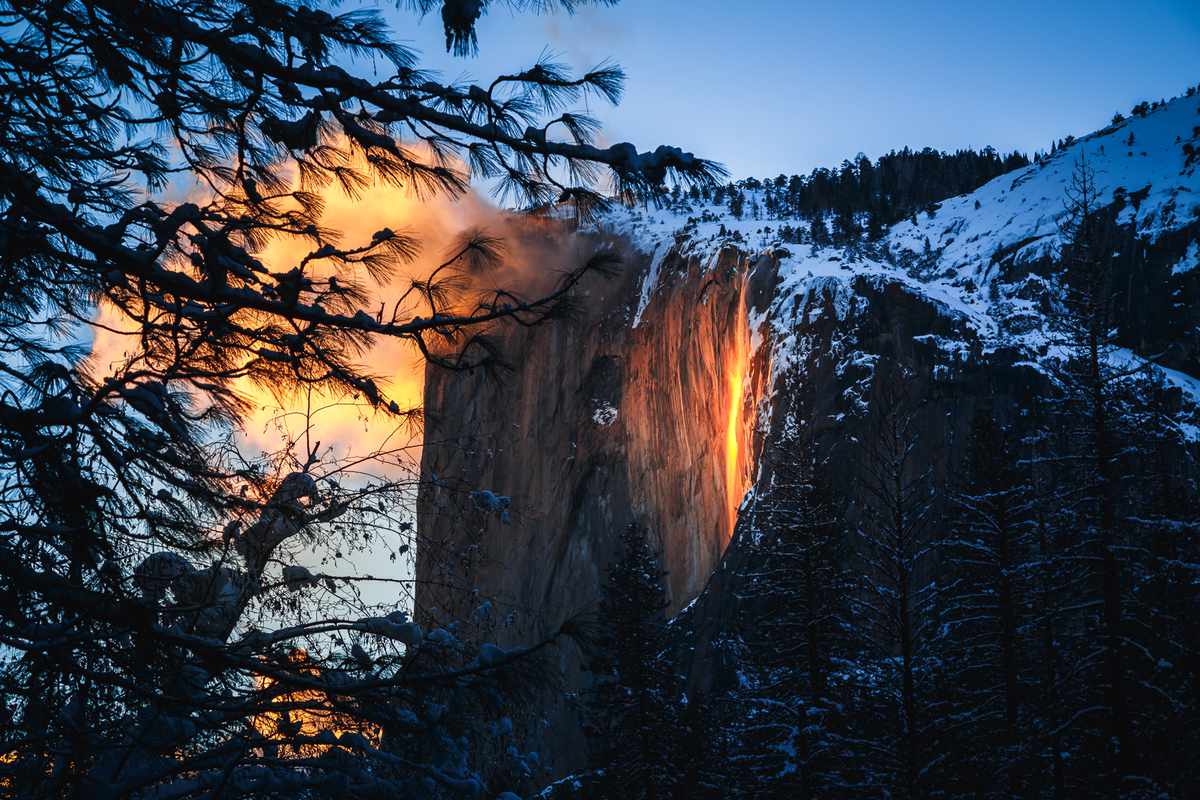Year after year, Yosemite makes the list of most-visited national parks in the U.S. — and with good reason. Millions of visitors flock here to marvel at its mountain-studded landscape, lakes, and waterfalls. While there's no bad time to explore Yosemite National Park, a visit in February allows for views of a unique natural phenomenon: the Yosemite "firefall."
Located on the eastern edge of El Capitan in the Yosemite Valley, Horsetail Fall only flows in the winter and early spring. In February, when the sun sets on a clear evening, it strikes the waterfall at just the right angle, lighting up the water in bright, glowing hues of orange and yellow. The effect looks as though the rock formation is spouting out fire and lava — hence the name "firefall."
With each passing year, the event has gained so much popularity (2019 saw 2,000 visitors in one day) that Yosemite National Park has implemented restrictions for the safety of both visitors and the sensitive vegetation in the area. With this year's added threat of COVID-19, Yosemite is taking additional steps to avoid large crowds.
This year's "firefall" is expected to be visible from Feb. 13 to 25, with restrictions in place daily from noon to 7 p.m. Beginning Feb. 8, guests will be required to have a reservation in order to enter Yosemite National Park. According to the National Park Service (NPS), you do not need a reservation if:
- You have a camping or lodging reservation
- You have a wilderness permit
- You have a vacation rental reservation inside the park
- You enter via the local public transit system (YARTS buses)
- You enter with an authorized tour
To view the spectacle, visitors will have to park at the Yosemite Falls parking lot and walk one and a half miles (each way) to the viewing area near El Capitan Picnic Area. Vault toilets will be available here. One lane at Northside Drive will be closed to vehicles, allowing pedestrians to walk on the road between the viewing and parking areas.
Meanwhile, Southside Drive will be open to vehicles for access to Swinging Bridge Picnic Area. Pedestrians will not be able to travel on or adjacent to the road in this section. From Cathedral Beach Picnic Area to Sentinel Beach Picnic Area, the portion between the road and Merced River will also be closed to all entry. Lastly, El Capitan Crossover will remain open to vehicles.
According to NPS, parking, stopping, and unloading passengers will be prohibited in several areas, so be sure to check the NPS website for full details on how to reach the best viewing points for the "firefall." The website also includes details for making your timed entrance reservation.
Jessica Poitevien is a Travel Leisure contributor currently based in South Florida, but always on the lookout for the next adventure. Besides traveling, she loves baking, talking to strangers, and taking long walks on the beach. Follow her adventures on Instagram.
Source: Read Full Article

